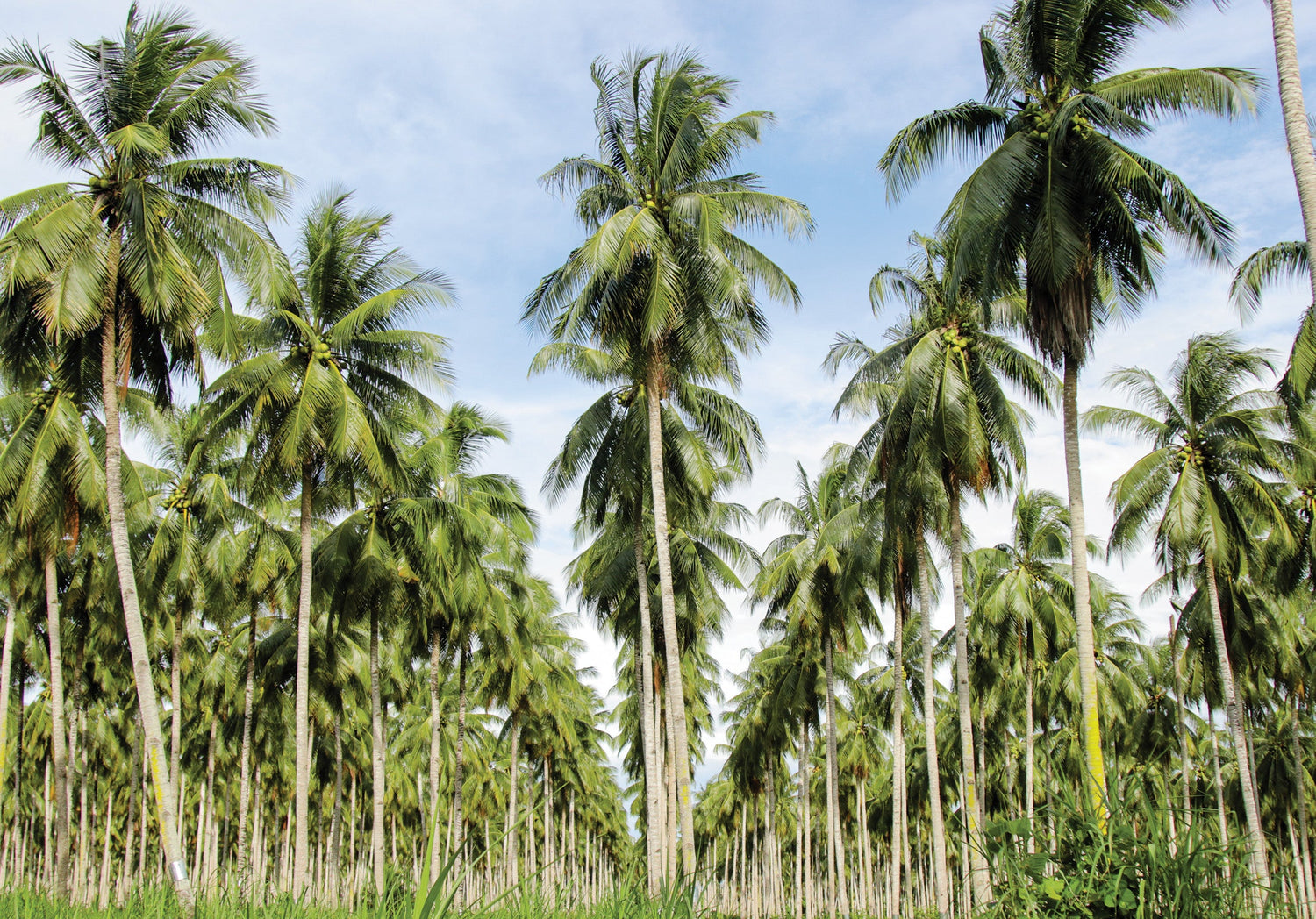Exploring the Mysterious Case of the Black Scorch Disease Affecting Coconut Palms
Picture a calm tropical paradise with long, flowing coconut palms that reach up to the clear blue sky. However, the Black Scorch Disease lurks in the shadows, waiting to strike at any moment. It may sound foreboding, and that's because it is! Ceratocystis paradoxa, the fungus that causes Chalara paradoxa and Thielaviopsis paradoxa, has been stealthily doing havoc on our cherished coconut palms for quite some time.
Let us delve into the world of Black Scorch Disease and uncover its causes, how it spreads like wildfire among coconut palms, effective management techniques to combat its wrath, and most importantly - how early detection and proper treatment can save our precious palm trees from succumbing to the effects of this vicious invader. So hang on to your coconuts because we're going to let the cat out of the bag on this deeply hidden fact!
Causes and Spreading of Black Scorch in Coconut Palms
Black scorch disease in coconut palms is caused by a fungal pathogen known as Ceratocystis paradoxa, also referred to as Chalara paradoxa or Thielaviopsis paradoxa. This devastating disease can spread rapidly and cause significant damage to coconut palm trees.
The fungus enters the tree through wounds or natural openings, such as leaf scars or pruning cuts. Once inside, it colonizes the vascular system of the tree, obstructing water and nutrient flow. As a result, the affected palm experiences wilting and drying of leaves.
The spreading of black scorch can occur through various means. One common way is through contaminated pruning tools or equipment used on infected trees. The fungus can also be transmitted through insects that feed on diseased coconut palms.
Environmental factors play a crucial role in the development and spread of black scorch disease. High humidity levels and warm temperatures create favorable conditions for fungal growth and infection. Additionally, stressed or weakened coconut palms are more susceptible to this destructive pathogen.
Preventing the spread of black scorch involves several measures. Regular inspection of coconut palms for any signs of infection is essential for early detection. Prompt removal and proper disposal of infected plant material can help prevent further spread.
Practicing good sanitation practices when working with coconut palms is vital to reduce the risk of introducing the fungus into healthy trees. This includes disinfecting pruning tools between use on different plants.
Understanding the causes and spreading mechanisms of black scorch disease in coconut palms is crucial for effective management strategies. By implementing preventive measures such as regular inspections, proper sanitation practices, and timely removal of infected material, we can minimize its impact on these iconic tropical trees.
Management and Prevention Techniques:
When it comes to managing and preventing black scorch disease in coconut palms, there are several strategies that can be employed. One important aspect is maintaining good hygiene practices within the plantation. This includes regularly cleaning tools and equipment to prevent the spread of the fungus.
Pruning infected fronds should also be done promptly to reduce the chances of further infection. It is crucial to cut off any affected parts of the tree as soon as they are identified. Proper disposal of these pruned materials is equally important, as burning or burying them can help eliminate potential sources of contamination.

In addition to practicing good hygiene, it is vital to ensure proper nutrition for coconut palms. A well-nourished tree has a stronger immune system and is more resistant to diseases like black scorch. Providing balanced fertilization with appropriate amounts of nitrogen, phosphorus, potassium, and micronutrients helps in promoting tree health.
Regular monitoring for early signs of black scorch disease is also essential for effective management. By closely observing changes in leaf coloration or wilting symptoms, prompt action can be taken before the infection spreads further.
Consulting with agricultural experts or local authorities can provide valuable guidance on specific management techniques suitable for your region's climate and conditions.
By implementing these preventive measures consistently throughout the coconut plantation, farmers can minimize the impact of black scorch disease on their crops and preserve healthy palm trees for future generations!
Conclusion: Importance of Early Detection and Proper Treatment for Black Scorch Disease
In light of the devastating effects that Black Scorch Disease can have on Coconut palms, it is crucial to emphasize the importance of early detection and proper treatment. By being vigilant and proactive in monitoring our coconut trees, we can effectively prevent this fungal infection from spreading and causing irreparable damage.
Remember, prevention is always better than cure. Regularly inspect your coconut palms for any signs or symptoms of Black Scorch Disease, such as wilting fronds or black lesions on the trunk. If you notice any abnormalities, act promptly by seeking professional help or consulting with agricultural experts who can provide guidance on the best course of action.
Implementing management strategies like pruning infected fronds, applying fungicides when necessary, and maintaining a healthy growing environment will go a long way in preventing the spread of this destructive disease. Additionally, practicing good hygiene by cleaning tools used for tree maintenance and avoiding wounds to the plant will help minimize opportunities for infection.
Furthermore, it is essential to stay informed about advancements in research and techniques related to diagnosing and treating Black Scorch Disease. By staying up-to-date with scientific developments through publications or engaging with local agricultural communities, you can remain well-equipped to combat this threat effectively.

Safeguarding our precious Coconut palms requires collective efforts from farmers, researchers, policymakers, and individuals passionate about protecting these iconic trees. Together we can preserve their beauty while ensuring they continue to provide us with sustenance and economic benefits for generations to come.
Let's join forces against Black Scorch Disease – an enemy that threatens not only our beloved Coconut palms but also our livelihoods!
